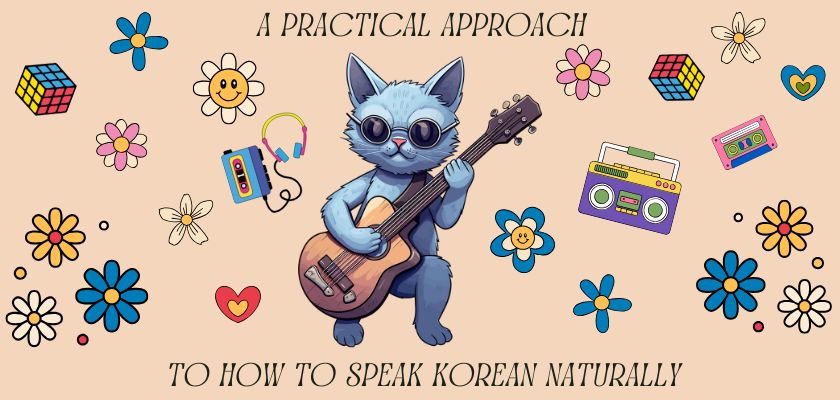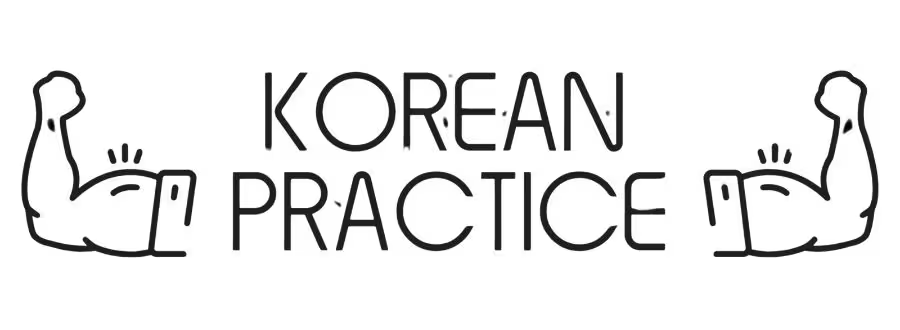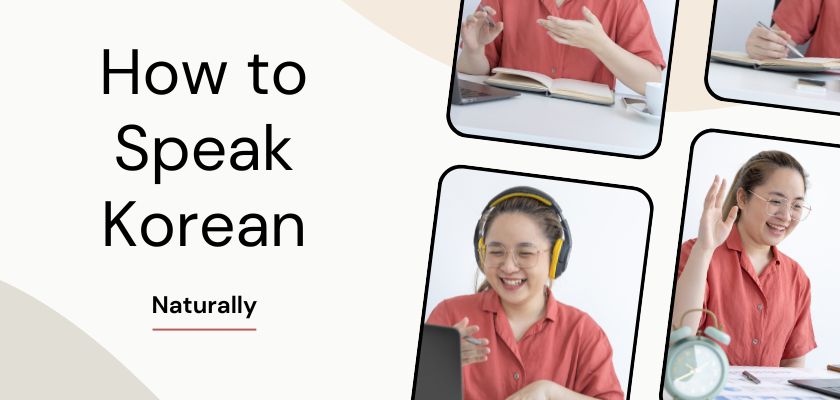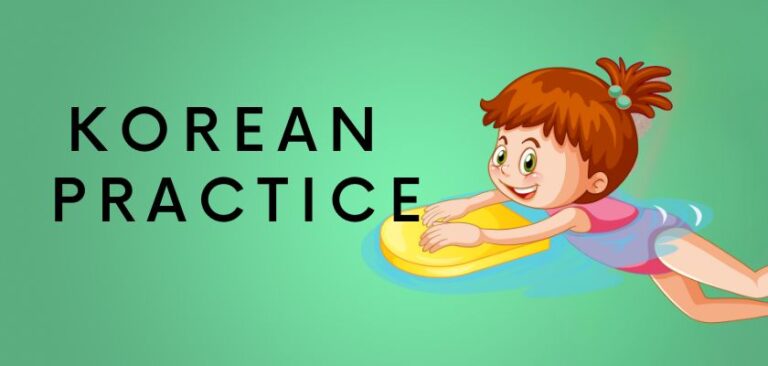Introduction
Before I wrote this blog on how to speak Korean, I read other blogs about how to speak Korean language for beginners. Most shared the same advice, so let me summarize the common suggestions I came across:
- Master the Korean alphabet.
- Memorize lots of vocabulary.
- Make Korean friends.
- Immerse yourself in a Korean environment.
- Watch Korean dramas and listen to K-pop.
- Memorize conversational phrases.
When I see people who haven’t truly thought about how to speak Korean language easily suggesting these so-called “methods” for learning Korean, I can’t help but feel frustrated by their lack of understanding. Let’s take a closer look at why these tips are impractical.

1. Unrealistic Methods about how to speak Korean language
Master the Korean Alphabet
Learning the Korean alphabet is an essential first step in how to speak Korean, and I encourage beginners to get familiar with it. However, mastering Hangul shouldn’t be your primary focus or take up excessive time. Instead, start with the basics of the alphabet, then move quickly into speaking practice. As you continue, your familiarity with Hangul will grow naturally. Think of Hangul as a stepping stone to understanding Korean sentences, not an endpoint in itself.
Memorize Lots of Vocabulary
While vocabulary is important, focusing on memorizing long lists of words often leads to burnout. Instead, I recommend a balanced approach by learning high-frequency words or vocabulary relevant to everyday conversations. Use these words in contextualized sentences to see them in action, which helps you remember them better. By learning vocabulary this way, you’re not only memorizing words but understanding their practical use.
Make Korean Friends
Connecting with native speakers can improve your Korean, but as a beginner, communicating with
might feel intimidating. Rather than relying solely on friendships for practice, consider using language exchange apps or joining structured conversation groups designed for learners. This setup allows you to practice at a comfortable pace and build your skills with guidance and patience, making interactions with native speakers more manageable as you progress.
Immerse Yourself in a Korean Environment
Being surrounded by Korean language and culture can boost your learning, but it’s more beneficial when you already have a foundational grasp of the language. Full immersion can feel overwhelming if you dive in too early. Start with structured learning—like short stories or guided videos—before moving on to immersive experiences. By gradually increasing your exposure to Korean, you can avoid feeling lost and develop confidence as you go.
Watch Korean Dramas and Listen to K-Pop
K-dramas and K-pop are fantastic resources for learning Korean, but consuming them without understanding can be overwhelming. Instead, approach these resources strategically. Focus on small segments of dialogue or lyrics, breaking down the language bit by bit. This approach allows you to enjoy Korean media while building listening skills and learning cultural nuances without feeling frustrated.
Memorize Conversational Expressions
Memorizing set phrases can be helpful for simple conversations, but to speak naturally, you’ll need a better understanding of Korean sentence structures. Use these expressions as a foundation, then practice changing parts of the sentence to create new expressions. For example, if you learn “잘 지냈어요?” (How have you been?), try modifying it with different verbs or subjects. This practice will help you go beyond memorization, allowing you to create your own sentences in real conversations.

2. A Practical Approach to How to Speak Korean Naturally
The Miracle Method: How to learn Korean effectively
For those serious about learning how to speak Korean language quickly and effectively, focus on training your brain to think in Korean sentence structures from the start.
Click to Learn Korean Through Stories!
Start with the Korean Alphabet (Hangul)
This is a good place to start. But don’t stress about mastering Hangul perfectly right away. Hangul is easy to learn, so just spend an hour or two with it and then move on. As you learn Hangul, start practicing speaking basic phrases right away.
Progressive Structure
Starting with basic sentence structure allows you to feel a sense of achievement early on. When you can successfully construct simple sentences like “나 먹다 (I eat)” or “엄마 가다 (Mom goes),” you’re laying a foundation. By gradually adding complexity, you can progress naturally from simple phrases to full sentences, learning how to speak Korean confidently and comfortably.
Natural Absorption of Sentence Structure
One of the biggest challenges in learning Korean is adapting to its unique SOV structure like “나 햄버거 먹다 (I eat a hamburger),” or “우리 자전거 타다 (We ride a bike).”
Practicing the subject-object-verb (SOV) structure in Korean helps rewire the brain to think in Korean rather than translating from their native language. This approach lets you internalize the natural order of Korean sentences, which means you’re more likely to remember and use it accurately in conversation.
Real-Life Application and Flexibility
By training with short, adaptable phrases and connectors (“and,” “but,” “because”), for instance, “나 햄버거 먹다. 그리고 나 옷 입다 (I eat a hamburger, and I wear clothes), you can quickly create useful sentences. This way, you aren’t just memorizing fixed expressions but are developing the ability to express yourself based on real-life scenarios.
By gradually layering new grammar and vocabulary, you’ll train your brain to naturally absorb Korean sentence structure, making it easier to understand and produce Korean sentences when speaking or listening.
My Approach: Practical Korean Story and Grammar Courses
Practical Content and Story-Based Learning: My Korean story-based courses offer contextualized practice, making grammar and vocabulary memorable by embedding them in stories. This approach can feel more engaging and less like studying because it allows you to see the Korean language as a living, flexible tool.
Reduced Cognitive Load: My method reduces the mental burden by focusing on essential structures before branching into less common vocabulary or complex grammar. This approach means you aren’t overwhelmed and can retain information better because you’re using Korean language in ways that feel relevant and intuitive.
Click to Learn Korean Through Stories!
Conclusion
Learning how to speak Korean language effectively requires more than memorizing vocabulary and grammar. If you’re serious about learning Korean, try adapting your approach to focus on practical usage and structured practice. My Korean story courses and grammar story courses take this approach, focusing on sentence structure and natural conversation patterns rather than isolated memorization. By gradually layering new grammar and vocabulary, you’ll build a natural fluency that helps you speak confidently and comfortably.
Ready to take the next step? Check out a preview lesson from my Korean story courses and see how simple and effective learning Korean can be.







